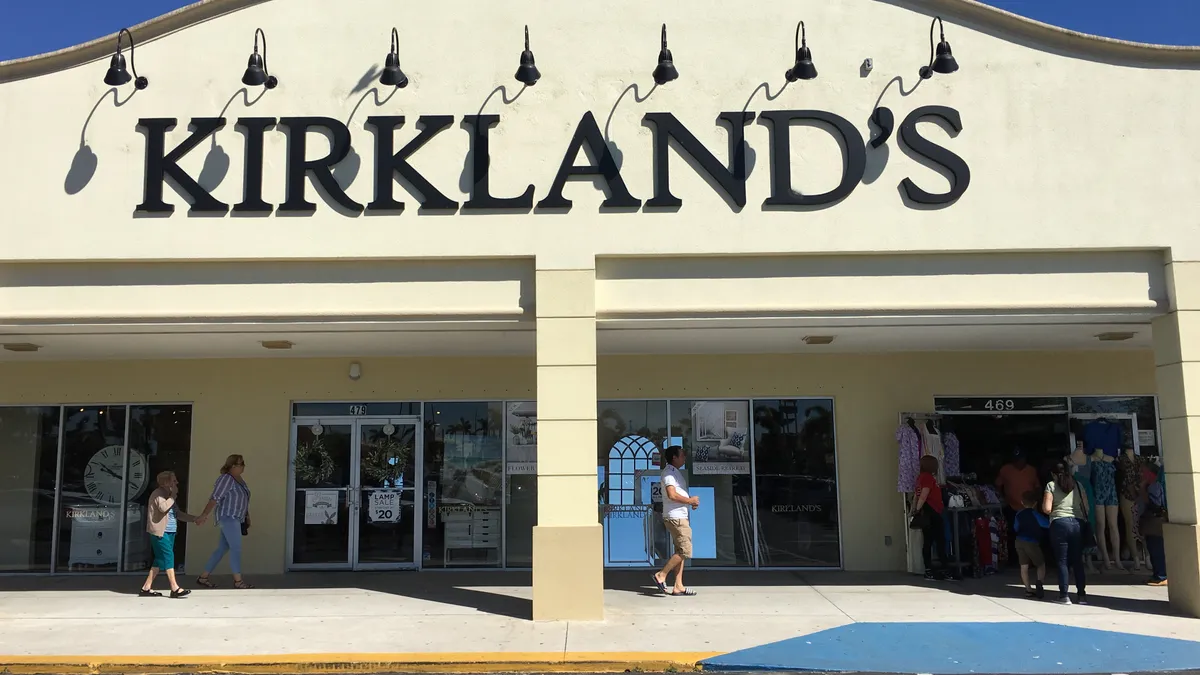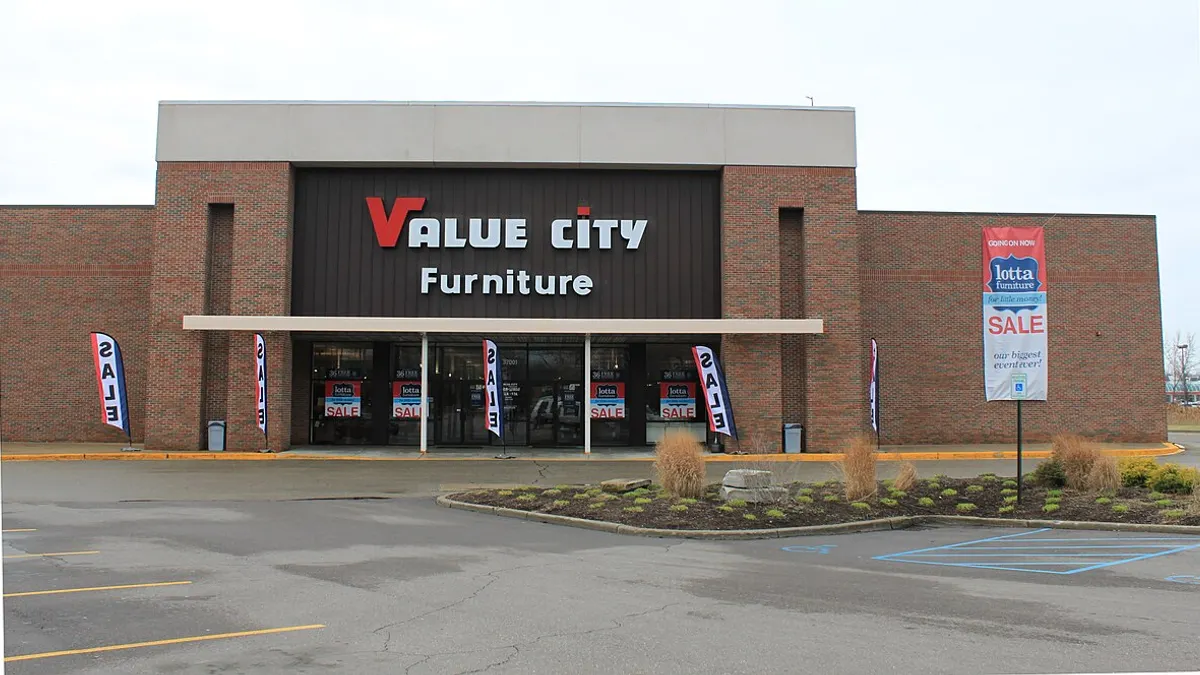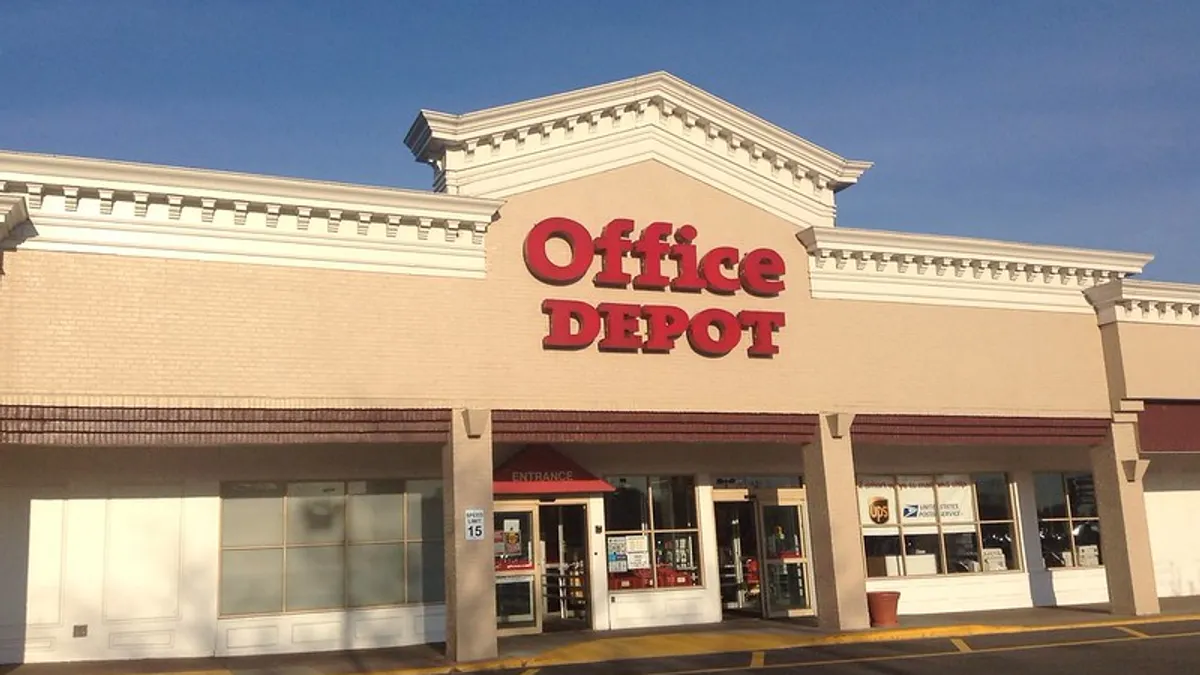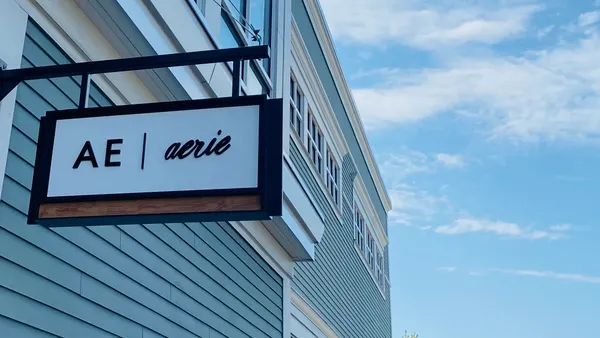It’s been tough going for department stores these days, with apparel sales particularly weak (especially over the holidays), e-commerce growing, and a question mark hanging over several physical retailers.
Discount department store Kohl’s has been spared much of the worst news. Yet earlier this month the company reported “volatile” sales and lowered its guidance—in the midst of a turnaround the company has boldly dubbed its “Greatness Agenda.”
As murmurings of the retailer possibly exiting Wall Street grew louder last week, the company said it had eliminated three top executive positions in an effort to a more “nimble” organization, according to Reuters.
Kohl’s is in an awkward position of making many of the right moves to get itself through a turnaround—yet finding that the fruits of its efforts remain elusive.
Kohl's strengths
Kohl’s does have a lot of strengths, say our retail experts. (Kohl's hasn't yet responded to Retail Dive's questions or request for comment.) For one thing, notes Howard Davidowitz, chairman of New York City-based retail consulting and investment banking firm Davidowitz & Associates Inc., Kohl’s has extricated itself from the woes of many American malls by setting up shop in small retail locations, where shoppers can park nearby and get in and out of a Kohl’s store quickly. The location also costs Kohl’s much less to operate than traditional mall-based stores, he says.
“I’d rather be off the mall than on the mall,” Davidowitz told Retail Dive. “You can drive right up to the store and go in.”
“They’re off the mall, they’re half the size, no multi-level, very efficient,” he said. “So their cost structure is dramatically lower than all the other department stores. Kohl’s is the low cost operator, and that’s very significant—it means they can offer lower prices on brands and still have a higher profit margin on brands.”
Another one of Kohl’s advantages against a rival like Target, which carries mostly its own private-label brands in home goods and apparel, is that, like T.J. Maxx and J.C. Penney, it offers well-known and even some higher-end brand names at lower prices.
And the retailer has succeeded immensely with its loyalty program, which it has moved onto mobile and which Shelley E. Kohan, VP of retail consulting at store analytics firm RetailNext, calls “brilliant.”
“There’s something about the ‘Kohl’s cash’ that drives the consumer to really plan their shopping around their Kohl’s cash,” Kohan told Retail Dive. “People are spending so much effort and time in converting, they have a strong bond with the customer and are known for that low price.”
Kohl's challenges
But, while Kohl’s is strong on many such fundamentals, there are other basic areas in need of repair, Kohan told Retail Dive.
Their checkout, while, as Davidowitz notes, is well located, often suffers long lines. Stores can be poorly organized, messy, and difficult to find things. And while Kohl’s has worked hard to provide omni-channel services like curbside pickup, and it has launched designer collaborations with the likes of in-demand Thai-American fashion designer Thakoon, store associates often seem a bit at sea when it comes to helping customers in store. In short, says Kohan, there are often too many “pain points” shopping at Kohl’s that can be discouraging for people shopping there.
“I almost think that they’re focused on so many strategies that maybe they’re walking away from some important areas,” she said.
But there’s another major obstacle faced by Kohl’s and many other retailers serving the lower- to middle-income customer, says Davidowitz, and that’s the fact that the American middle class has taken a beating and just doesn’t have the wherewithal to spend much these days.
“We’re the most over-stored country, and there are several overwhelming problems,” he said. “People have less money and this economy isn’t helping. You cannot double your number of people in poverty in 10 years, build more stores, and not have some kind of gigantic shakeout. Kohl’s is slowing down because the middle class is getting killed.”
Perhaps in a nod to that, Kohl’s, already a place to go for lower prices on brand-name merchandise, is experimenting with an off-price outlet. While that could be risky, considering that any off-price store could cannibalize its existing sales, Davidowitz says that it's also a pretty tempting move for any retailer, considering the success in that space.
"T.J. Maxx is most successful retailer in America," he notes. "It’s what’s working. If you’re in business, it’s pretty smart to look at what’s working."
Time to go private?
And Kohl’s was definitely built with the American middle class in mind. The retail business was first founded in 1962 in Wisconsin by a grocery-store chain owner, Max Kohl, who made the decision to position his new department store business at the mid-tier, between high-end department stores like Saks Fifth Avenue and discount department stores like Kmart or Wal-Mart.
The decade after taking its shares public in 1992, the retailer’s store count multiplied five-fold, its sales eight-fold, and its shares 40-fold, according to the Milwaukee Journal-Sentinel.
The company has been drawn to the idea of “greatness” since at least 2005, when it adopted the slogan “Expect great things.” Nearly two years ago, as sales continued to falter, CEO Kevin Mansell announced that the retailer’s turnaround strategy would be dubbed its “Greatness Agenda,” and would be “built upon: amazing product, incredible savings, easy experience, personalized connections and winning teams,” according to a company press release.
By Kohl's own estimation, that includes achieving three goals by the end of 2017: boost sales to $21 billion, be in the 90th percentile for employee engagement, and boosting customer loyalty.
But that turnaround is failing to produce the kind of results that investors can comfortably live with. Davidowitz, who notes the company is “holding its own” and not, unlike others, closing stores, told Retail Dive that the retailer is mulling the idea of going private. And, with J.C. Penney also making strides in its own turnaround, Kohl’s is now facing that much more competition.
“Kohl’s had a picnic when Penney was destroying themselves because that’s the store that’s most like them in terms of their customer,” Davidowitz said.
Kohl’s strengths, which includes a healthy cash-on-hand and cash flow situation, could make it attractive to private equity companies. And going private could give it some breathing room to take care of some of those still-throbbing pain points that may be preventing it from getting to “great.” With investors breathing down their necks, the company may be forced to cost-cut their way to more favorable quarterly reports, Kohan said.
“I think Kohl’s is a great brand,” she said. “It resonates with the U.S. market. They have a captive audience. The question remains: Can they keep them captive?”






















